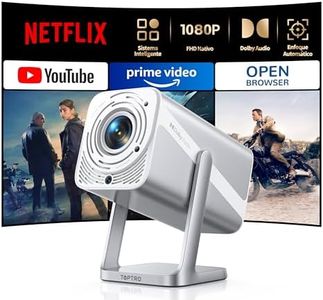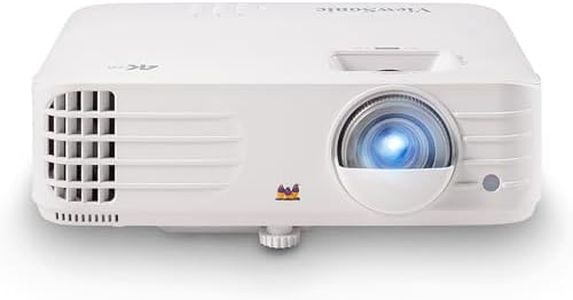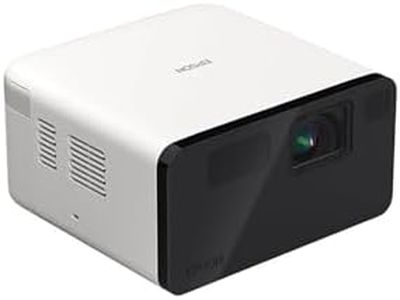We Use CookiesWe use cookies to enhance the security, performance,
functionality and for analytical and promotional activities. By continuing to browse this site you
are agreeing to our privacy policy
10 Best Mini Projectors
From leading brands and best sellers available on the web.By clicking on a link to a third party's website, log data is shared with that third party.
Buying Guide for the Best Mini Projectors
Mini-projectors are compact and portable devices that allow you to display images or videos on a wall or screen, making them great for home entertainment, business presentations, or travel. Choosing the right mini-projector involves looking at several key features to ensure it meets your intended use—whether that's movie nights, gaming, or giving presentations. Understanding how each specification impacts your experience will help you select a projector that best fits your needs and creates the viewing experience you desire.Brightness (Lumens)Brightness, often measured in lumens, determines how visible the projected image will be in different lighting conditions. The higher the lumens, the brighter the image will appear, which is important if you plan to use the projector in a well-lit room or during the day. Mini-projectors generally range from around 100 to 1000 lumens. For dark rooms or nighttime outdoor use, lower lumens (under 400) may suffice, whereas for daylight or bright spaces, you’ll want something above 400 lumens. Think about where you plan to use the projector most often—choose higher brightness if ambient light can’t be well controlled.
ResolutionResolution refers to the sharpness and detail of the projected image, usually indicated by numbers like 480p, 720p, or 1080p. A higher resolution gives clearer, more detailed pictures, which can be important when watching movies or showing slides with fine details. If you mainly stream cartoons or don’t mind a softer image, standard resolutions like 480p can be acceptable. For movies and gaming, or if you want crisp images, aim for at least 720p, with 1080p offering the best clarity in the mini-projector category.
Portability and SizePortability means how easy it is to carry the mini-projector around, which depends on the size and weight of the unit. Smaller, lighter models are great if you want to travel, move it between rooms, or use it outdoors. However, ultra-compact designs may have fewer features or lower performance. If portability is not your main goal and the projector will stay mostly in one spot, a slightly larger model may offer better image quality or more connection options. Consider your mobility needs when balancing size with features.
Battery LifeBattery life matters if you won’t always have access to a power outlet—perfect for backyard movie nights or presentations on the go. Some mini-projectors come with built-in batteries, typically lasting between 1.5 to 4 hours on a single charge. If you only project brief videos, a shorter battery life may be fine, but for movies or long meetings, look for models with at least two hours of use per charge. Think about your usage habits: if portability and outdoor use are key, battery life becomes a crucial spec.
Input Options (Connectivity)Input options refer to the types of devices you can connect to the projector, such as HDMI, USB, microSD, or wireless streaming (Wi-Fi, Bluetooth). More input options mean greater flexibility—you can connect a laptop, phone, streaming stick, or even a game console. If you mainly use one device, just make sure it matches the input provided, but for versatility or sharing the projector with others, having several connectivity options is valuable. Decide which gadgets you’ll connect most, and check for compatibility.
Speaker QualityBuilt-in speakers in mini-projectors vary widely in quality and volume. While most have some type of speaker, the audio might not be powerful enough for large rooms or outdoor use. If sound is important and you want to keep things simple, look for a projector with louder or higher-quality built-in speakers. However, many people use portable speakers or soundbars for better audio. Consider whether you value all-in-one convenience or plan to use external speakers.
Keystone Correction and FocusKeystone correction and focus allow you to adjust the image so that it looks properly shaped and clear, even if the projector is not perfectly aligned with the screen. Manual adjustments are common on basic models, but automatic correction or easy-to-use dials make setup much quicker, especially if you move the projector a lot. If you expect to set up in different locations or at different angles, prioritize models with good keystone and focus options to ensure a perfect picture every time.
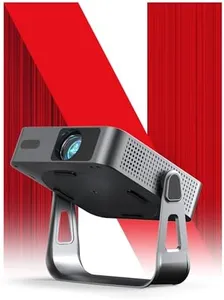
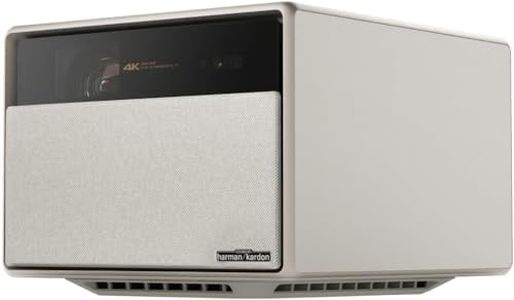
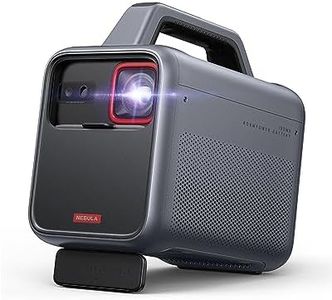
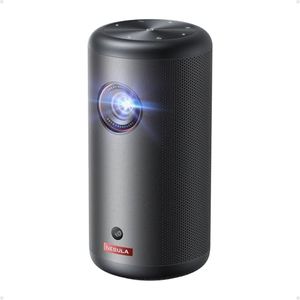


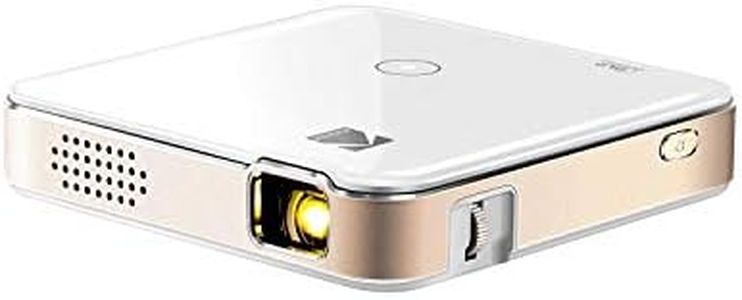
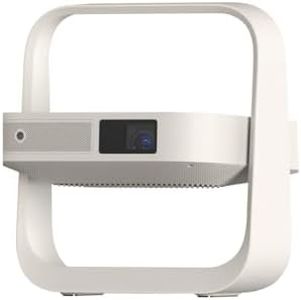
![[Netflix Official & TOF Auto Focus] XuanPad Mini 4K Smart Projector, 700 ANSI, Dolby Audio, Auto Keystone, Native 1080P Portable Projector with WiFi 6 Bluetooth 5.2 for Home/Outdoor](https://images-proxy.bestreviews.guide/iGoMruIZruh5N8eYPmPPSQiZk5Y=/0x300/https://m.media-amazon.com/images/I/414wPN0OhmL._AC_CX679_.jpg)
